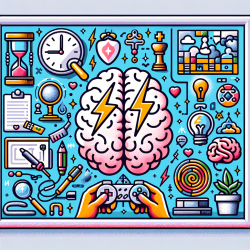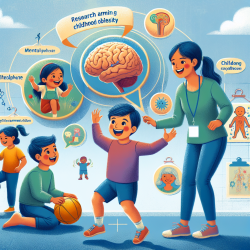Introduction
As a Special Education Director, staying at the forefront of innovative practices is crucial for enhancing student outcomes. The research article titled "Early adopters of the magical thinking cap: a study on do-it-yourself (DIY) transcranial direct current stimulation (tDCS) user community" provides intriguing insights into how DIY tDCS is being used for cognitive enhancement and therapy. This blog explores how you can integrate these findings into your practice and encourage further research.
Understanding tDCS and Its Potential
Transcranial direct current stimulation (tDCS) is a non-invasive technique that uses a low electrical current to stimulate specific brain areas. Originally developed for treating medical conditions like depression, it has gained popularity for cognitive enhancement, improving attention, memory, and learning capabilities.
Despite its potential, tDCS devices are not yet regulated, raising concerns about safety and efficacy. The DIY community has emerged, with individuals building or purchasing devices for personal use. This community's insights can be invaluable for practitioners seeking to enhance their therapeutic methods.
Key Findings from the DIY tDCS User Community
The study reveals that the DIY tDCS community is diverse, with users ranging from young biohackers to seniors seeking cognitive improvement. A significant portion of users reported positive outcomes, such as enhanced attention and memory, which could be beneficial in educational settings.
However, safety remains a concern, with users expressing worries about electrode placement and long-term effects. The community self-regulates through forums, sharing experiences and safety tips, which could inform best practices for therapists considering tDCS integration.
Implementing tDCS Insights in Your Practice
To harness the potential of tDCS in your therapy practice, consider the following steps:
- Research and Training: Stay informed about the latest tDCS research and attend relevant conferences or webinars to deepen your understanding.
- Safety First: Prioritize safety by adhering to established protocols and consulting with medical professionals when necessary.
- Community Engagement: Engage with the DIY community to learn from their experiences and integrate practical insights into your practice.
- Regulatory Awareness: Monitor regulatory developments to ensure compliance and advocate for guidelines that support safe and effective use.
Encouraging Further Research
While the DIY tDCS community offers valuable insights, further research is needed to establish standardized guidelines and explore long-term effects. Practitioners can contribute by documenting outcomes, participating in studies, and advocating for comprehensive research initiatives.
To read the original research paper, please follow this link: Early adopters of the magical thinking cap: a study on do-it-yourself (DIY) transcranial direct current stimulation (tDCS) user community.










